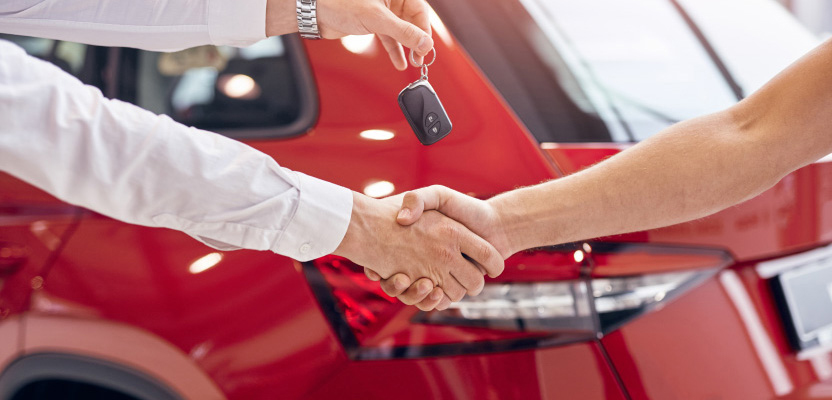When selling a vehicle, it is important to understand the risks involved, and your responsibilities as a seller. For example there is a risk in allowing a buyer to take a test drive, and after the sale a buyer may try to claim for any problems that arise with the same. By following a procedure prior to the sale and by using a sale agreement which defines the responsibilities of both parties involved, these risks can be minimized, and the likelihood of misunderstandings or complications will be reduced.
A checklist for selling a vehicle
- Ensure that you have the right to sell it, i.e. that you are its legal owner or have proof of permission from the owner to sell it on their behalf.
- Assemble the paperwork, including the V5C registration document (logbook), handbook, MOT certificate, service log, receipts for major repairs, and any warranty.
- Think about using a vehicle sale agreement as a prompt of checks to make before the sale.
- Include any issues that have been identified during these checks in the sale contract so that you and the buyer can agree that it is ‘sold as seen’.
- Fill out the agreed price, date of sale, registration number, make and model, and the names and addresses of both parties on the contract.
- Provide and sign a copy of the agreement each for yourself and the buyer.
- Fill out the tear-off slip from the bottom of the V5C registration document and send it to the DVLA. This notifies the DVLA that it has changed ownership. Give the remainder of the registration document to the buyer.
- You should provide the vehicle service log, manual, and MOT certificate (if it has one currently) with the sale.
- If road tax is not included in the sale, you may claim a refund on the remainder of the taxed period from DVLA.
- Cancel your insurance if it is not expired already – your insurer may provide a partial refund depending on the conditions of insurance and the amount of time that it is still insured for.
As a seller you must represent it reasonably and accurately to prospective buyers. There is no requirement to assure buyers about the condition of it, but you cannot be misleading – if they ask about the condition you must respond honestly. It is very important to ensure that it is roadworthy, since it is a criminal offence to sell an unroadworthy vehicle unless the buyer is fully aware of this. It can also be worth fixing minor faults as this could improve the sale price. A buyer could take legal action if they feel that you have not disclosed any issues. A buyer may also have recourse to legal action if they decide that you knowingly sold them a vehicle that was not fit for purpose, given that they had clearly communicated to you their intentions for the same. Here the onus is on the buyer to prove that any faults causing it to be unroadworthy were present at the time of purchase and did not arise later.
The test drive
Most potential buyers will want a test drive. It is important to check that they can do this legally. Check that they have a valid driving license and are insured to drive your car. They may be covered under their own car insurance if they have your permission to drive your car. You may also be able to extend your own insurance to cover test drivers, which could make sense if you expect many test drives. As a private seller you should always accompany the test driver in your car, and avoid situations where they could steal the car. For your own safety it is sensible to get the prospective buyer’s name, address and contact number, and leave this with a trusted third party before allowing a test drive.
After you have sold your car
After the sale, it is vital that you notify the DVLA of the change of ownership as soon as possible. The procedure is explained on the V5C registration certificate, and can now be completed immediately online, with the seller present if they wish. If you do not do this there is a risk that you are held accountable by the DVLA for traffic offences committed by the new owner.
Scrapping your vehicle
If you decide that you want to scrap it, you should sell it to a scrap yard. There are rules about its disposal, both for environmental reasons and to combat theft, so you should seek an authorized treatment facility to do this. It is illegal for a scrap yard to pay you with cash, and they must ask you for proof of identity. Most importantly, you should receive a Certificate of Destruction (COD) within 7 days as evidence that you are no longer its owner. If you have scrapped your car and do not have this certificate you could be fined £80. Contact the DVLA if you have not received the COD within 7 days.
Using a vehicle sale agreement
It is a simple legal contract between the seller and the buyer with the exchange agreed on a sold as seen basis. It is a reminder to both parties of what should be included and checked to avoid later complications.
Benefits to the sellerThe agreement is a legally binding full and final settlement, giving you peace of mind even if there are problems with it.
It sets out the important details a seller should check before selling one, which will avoid issues later, or cause the sale price to be reduced.
It protects the seller from incomplete payment by including an obligation that the buyer to pay the full amount within a defined timeline before they can take ownership.

